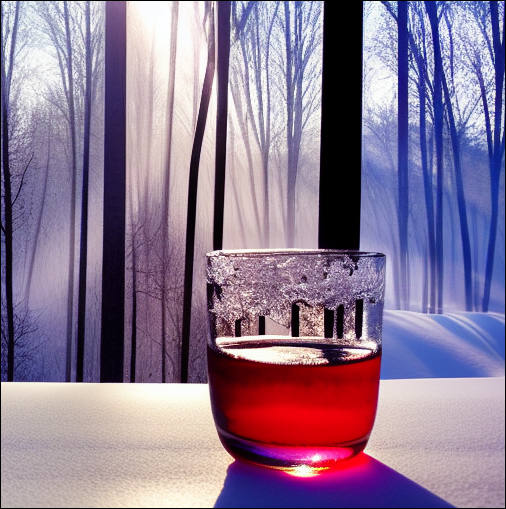
-
It can be almost perfect, it can be some style.
This thing integrates different things and you can mix them.
You own mind is functioning similar to it - it gets small focused spot image and previous image and makes estimate based on your own knowledge.
-
@Vitaliy_Kiselev sorry, I didn't mean to say that the AI's have no value, or that they are not creative in their own right.
Actually, quite the opposite.
I see them as being an addition to photography, digital art, painting etc.
AI art is its own thing, and quite different to photography, et al. Firstly, as you have shown it takes a completely different skill set, one of describing, keywords, seed imagery etc.
I think as opposed to 'we don't need photographers anymore' possibly it is more like: 'we don't need stock anymore'. Shutterstock & Adobe must be worried big time.
Regardless, it's it's own thing, and AI for AI's sake is a valid artform. One that should be explored outside of "AI makes photographers redundant".
Have a look at this if you haven't already:
The big take away, is if it was perfect, like shot on camera, it would loose the important painterly, glitchy aesthetic. Sometimes, its the imperfections that make it better.
-
Now, let's try to play with depth of focus and precise lighting, while keeping exact flowers specs we need
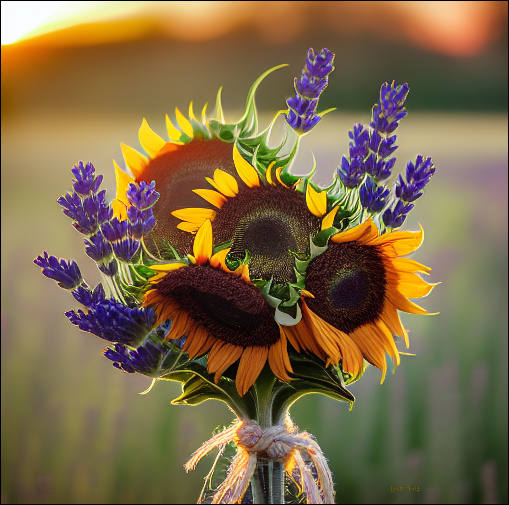
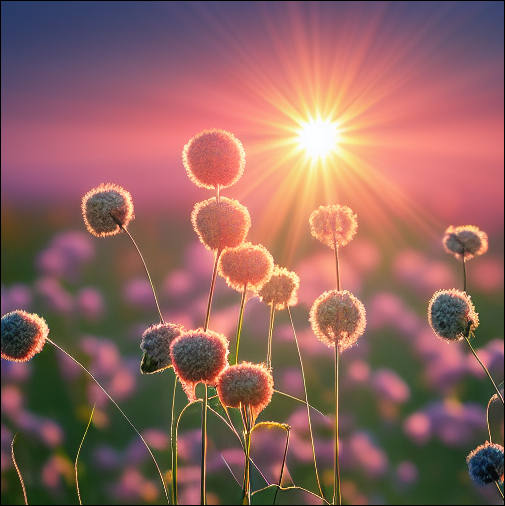
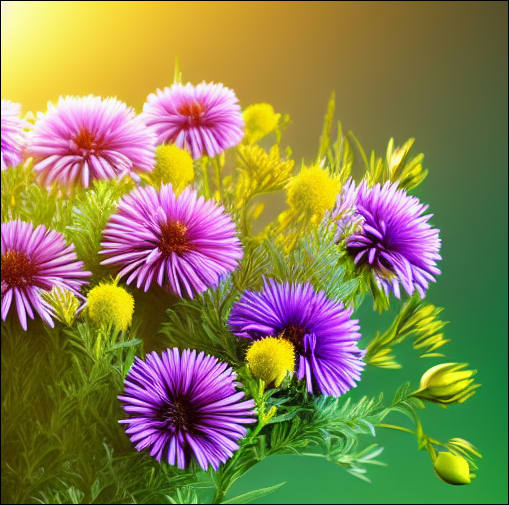

 sa7287.jpg509 x 505 - 57K
sa7287.jpg509 x 505 - 57K
 sa7288.jpg505 x 506 - 42K
sa7288.jpg505 x 506 - 42K
 sa7289.jpg509 x 505 - 65K
sa7289.jpg509 x 505 - 65K -
Slightly more of my experiments with art made using Stable Diffusion.
It used specially processed initial photo.
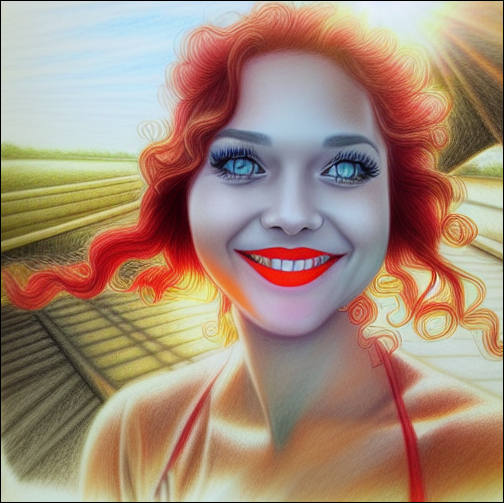
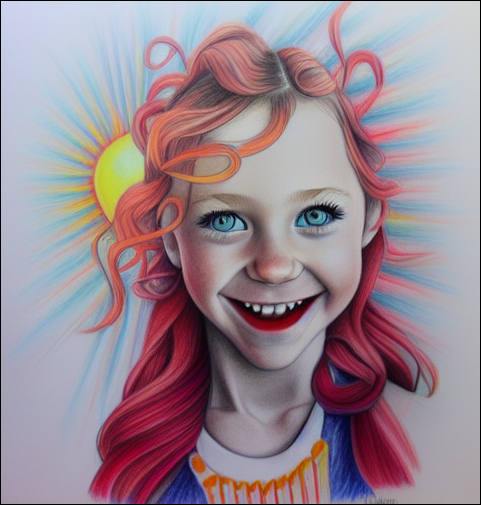
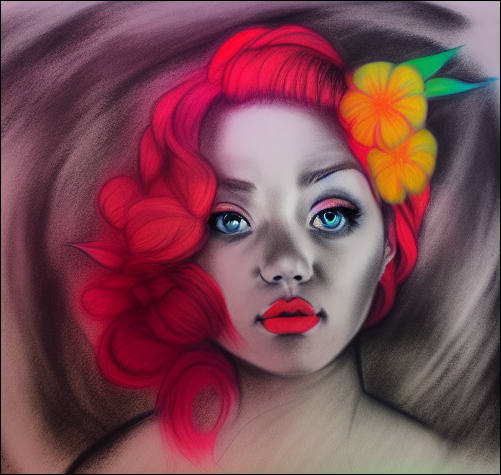
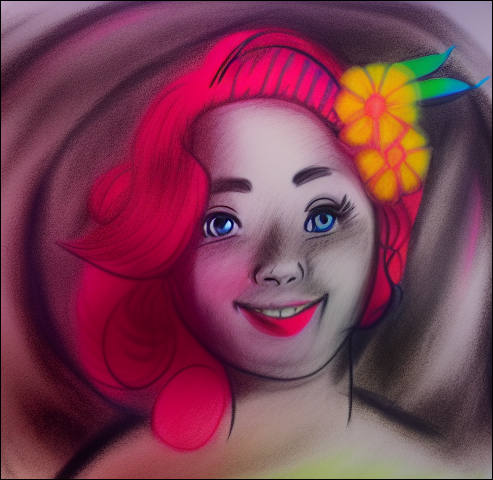

 sa7284.jpg504 x 503 - 48K
sa7284.jpg504 x 503 - 48K
 sa7283.jpg481 x 505 - 40K
sa7283.jpg481 x 505 - 40K
 sa7286.jpg501 x 475 - 39K
sa7286.jpg501 x 475 - 39K
 sa7285.jpg493 x 480 - 37K
sa7285.jpg493 x 480 - 37K -
Another thing that appeared last week:
Made form this (many iterations in SD)
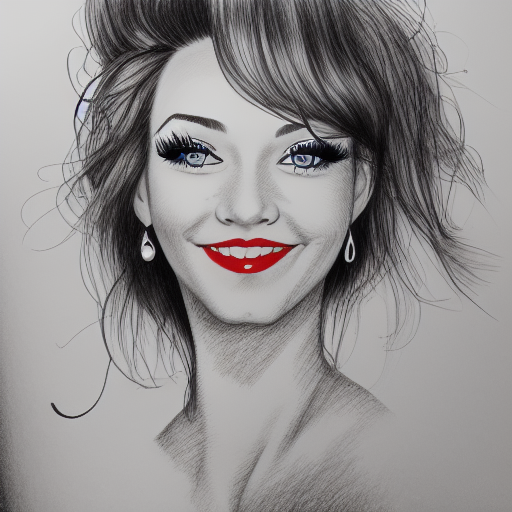

 780164983_pen_drawing_black_and_white__art__beautiful_smiling_female_with_deep_bright_blue_large_eyes__long_eyelashes_with_mascara___red_nice_long_slightly_curly_hair__bright_red_lips.png512 x 512 - 434K
780164983_pen_drawing_black_and_white__art__beautiful_smiling_female_with_deep_bright_blue_large_eyes__long_eyelashes_with_mascara___red_nice_long_slightly_curly_hair__bright_red_lips.png512 x 512 - 434K -
It is not about prompts only.
I am using some initial seed image, sometimes specially modified, on each iteration you select one of 9 varients, change how much it can change overall image, change prompt, also paint some areas to change more, and such can be 10, 15, 20 iterations.
It is an art tool.
Note how I am able to make dress transparent.
Or how I can add innuendo, make you feel that girl is showing her private part to the sunflower. It was intentional, and source image had been same as both other reg dress girl. Even her clothes are being set not only buy prompts, but iterated and also painted and changed.
-
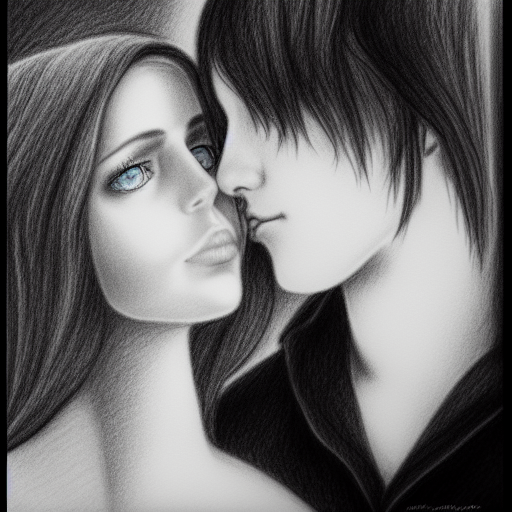
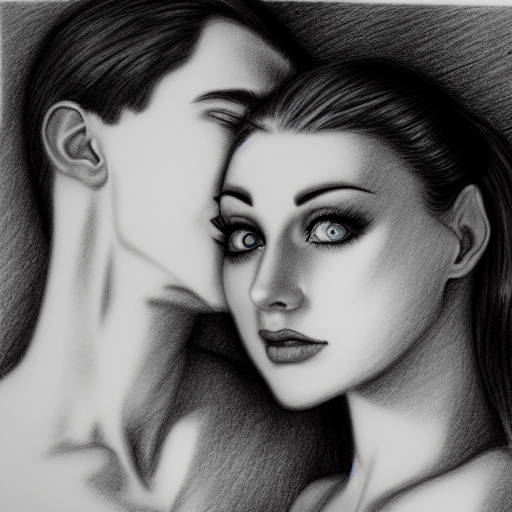
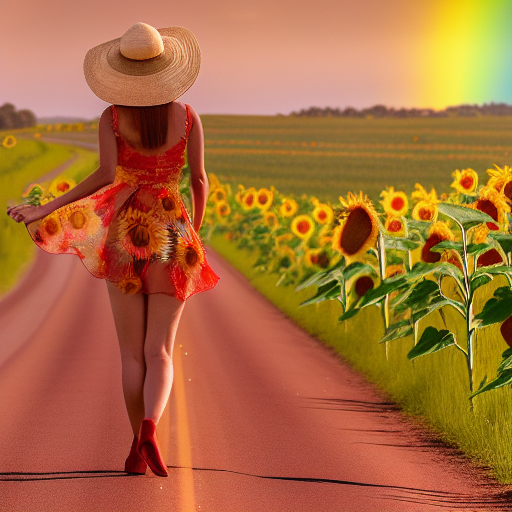
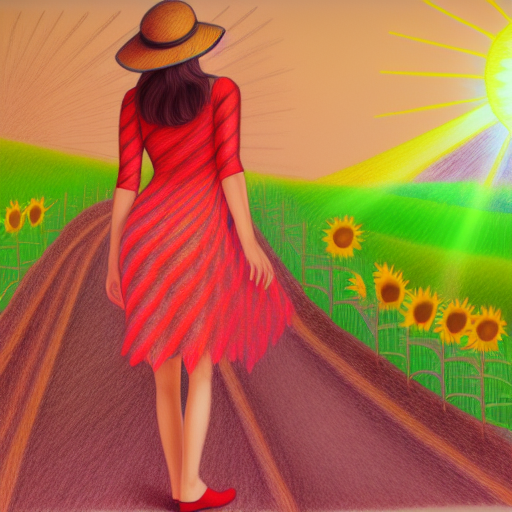
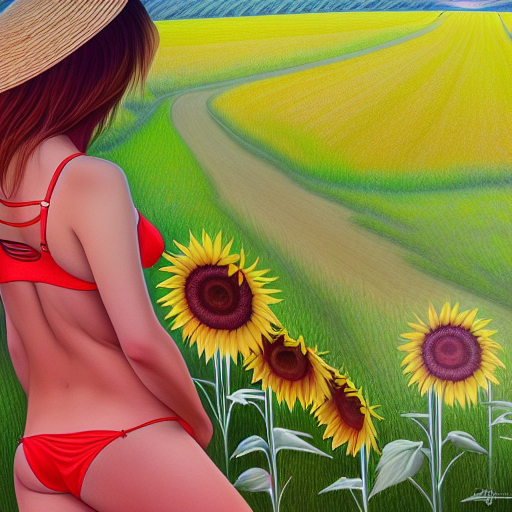

 1524394608_pencil_drawing_colorful_art_female_with_red_fully_transparent_underwear_and_large_straw_hat__looking_away_the_right_hand_touches_itself_in_an_intimate_place__road_going_till_horizon__yellow_sunflowers_along_the.png512 x 512 - 486K
1524394608_pencil_drawing_colorful_art_female_with_red_fully_transparent_underwear_and_large_straw_hat__looking_away_the_right_hand_touches_itself_in_an_intimate_place__road_going_till_horizon__yellow_sunflowers_along_the.png512 x 512 - 486K
 1711508014_pencil_drawing_art_black_and_white__tender_loving_female_with_very_big_blue_eyes_caressing_male_neck.png512 x 512 - 465K
1711508014_pencil_drawing_art_black_and_white__tender_loving_female_with_very_big_blue_eyes_caressing_male_neck.png512 x 512 - 465K
 2692316513_pencil_drawing_art_black_and_white__tender_loving_female_with_very_big_blue_eyes_caressing_male_neck.png512 x 512 - 472K
2692316513_pencil_drawing_art_black_and_white__tender_loving_female_with_very_big_blue_eyes_caressing_male_neck.png512 x 512 - 472K
 238565697_beautiful_female_with_red_transparent_dress_and_large_straw_hat__long_hair__looking_away__paved_road_going_till_horizon__yellow_sunflowers_along_the_road__green_fields_to_the_right_and_left_side__sunset_with_sun.png512 x 512 - 427K
238565697_beautiful_female_with_red_transparent_dress_and_large_straw_hat__long_hair__looking_away__paved_road_going_till_horizon__yellow_sunflowers_along_the_road__green_fields_to_the_right_and_left_side__sunset_with_sun.png512 x 512 - 427K
 1080427678_pencil_drawing_colorful_art_female_with_red_fully_transparent_dress_and_large_straw_hat__looking_away__right_hand_lifts_the_dress__road_going_till_horizon__yellow_sunflowers_along_the_road__green_fields_to_the_.png512 x 512 - 425K
1080427678_pencil_drawing_colorful_art_female_with_red_fully_transparent_dress_and_large_straw_hat__looking_away__right_hand_lifts_the_dress__road_going_till_horizon__yellow_sunflowers_along_the_road__green_fields_to_the_.png512 x 512 - 425K -
I've been playing with SD quite a bit, and have to say it's probably one of the best tools for mood boards, I'll explain why.
Due to the data dragnet style of training, it tends to generate imagery that is stereotypical. So it kinda forces you to be creative with prompts, and to think about what image you really want, and what constitutes that image.
"Person sitting on chair" quickly turns into: "middle aged man sitting on an old wooden chair, in a small room with wall paper, lit through an open window."
Then you can get an infinite amount of permutations of this. Just brilliant for mood board generation!
Personally I don't think it's a competition to the human neural network. Not because it's not good enough, but because people tend to enjoy filming. It's a tool that we can use, just like a camera is a tool.
Then again, when SD gets video, I wouldn't mind using it for b-roll. I don't really enjoy filming branches swaying all that much.
Then again, "middle aged man" turns out to be "white middle aged man with a belly".
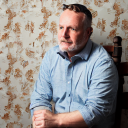
 middle_aged_man_sitting_on_an_old_wooden_chair__in_a_small_room_with_wall_paper__lit_through_an_open_Seed-88416_Steps-50_Guidance-7.5.png512 x 512 - 489K
middle_aged_man_sitting_on_an_old_wooden_chair__in_a_small_room_with_wall_paper__lit_through_an_open_Seed-88416_Steps-50_Guidance-7.5.png512 x 512 - 489K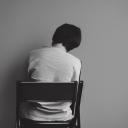
 0.jpg512 x 512 - 14K
0.jpg512 x 512 - 14K -
Beautiful
-
How about extremely complex scene - look at sunset snowy and misty forest through frosty window
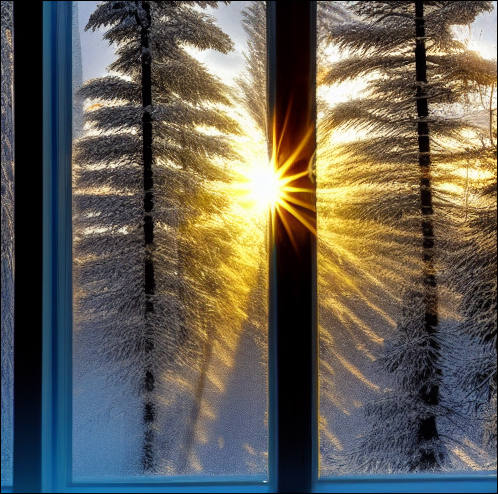
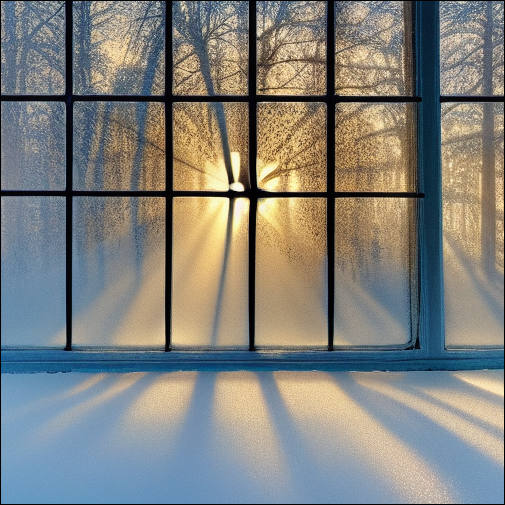

 sa7266.jpg498 x 494 - 71K
sa7266.jpg498 x 494 - 71K
 sa7267.jpg505 x 505 - 63K
sa7267.jpg505 x 505 - 63K -
May be it is stupid and can't play a little, like artist will do?
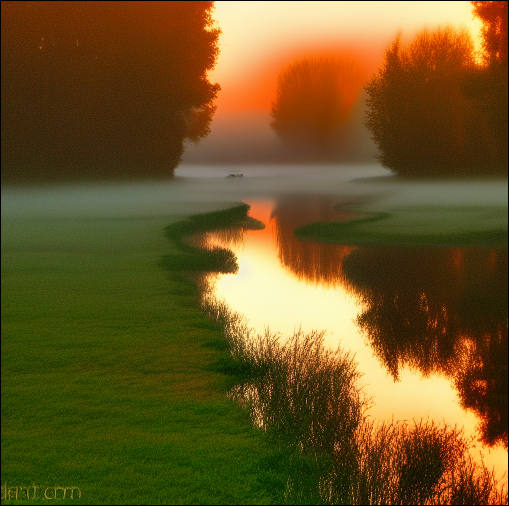
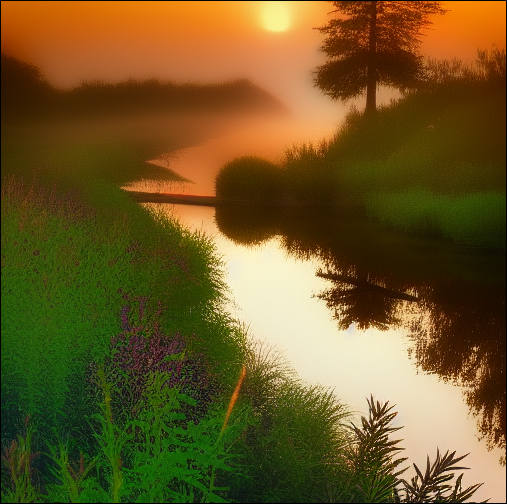
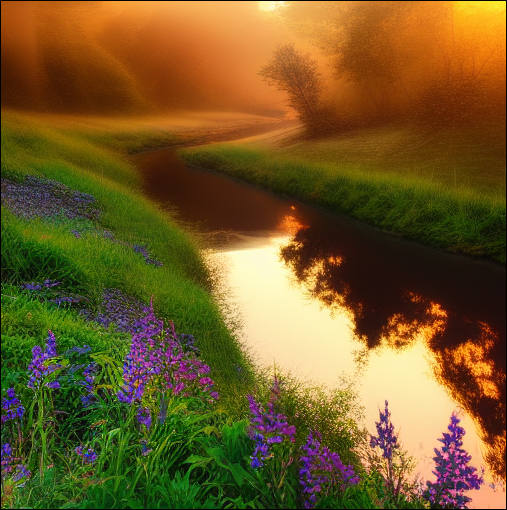

 sa7258.jpg509 x 506 - 44K
sa7258.jpg509 x 506 - 44K
 sa7259.jpg507 x 504 - 49K
sa7259.jpg507 x 504 - 49K
 sa7260.jpg507 x 510 - 64K
sa7260.jpg507 x 510 - 64K
Howdy, Stranger!
It looks like you're new here. If you want to get involved, click one of these buttons!
Categories
- Topics List23,993
- Blog5,725
- General and News1,354
- Hacks and Patches1,153
- ↳ Top Settings33
- ↳ Beginners256
- ↳ Archives402
- ↳ Hacks News and Development56
- Cameras2,368
- ↳ Panasonic995
- ↳ Canon118
- ↳ Sony156
- ↳ Nikon96
- ↳ Pentax and Samsung70
- ↳ Olympus and Fujifilm102
- ↳ Compacts and Camcorders300
- ↳ Smartphones for video97
- ↳ Pro Video Cameras191
- ↳ BlackMagic and other raw cameras116
- Skill1,960
- ↳ Business and distribution66
- ↳ Preparation, scripts and legal38
- ↳ Art149
- ↳ Import, Convert, Exporting291
- ↳ Editors191
- ↳ Effects and stunts115
- ↳ Color grading197
- ↳ Sound and Music280
- ↳ Lighting96
- ↳ Software and storage tips266
- Gear5,420
- ↳ Filters, Adapters, Matte boxes344
- ↳ Lenses1,582
- ↳ Follow focus and gears93
- ↳ Sound499
- ↳ Lighting gear314
- ↳ Camera movement230
- ↳ Gimbals and copters302
- ↳ Rigs and related stuff273
- ↳ Power solutions83
- ↳ Monitors and viewfinders340
- ↳ Tripods and fluid heads139
- ↳ Storage286
- ↳ Computers and studio gear560
- ↳ VR and 3D248
- Showcase1,859
- Marketplace2,834
- Offtopic1,320




